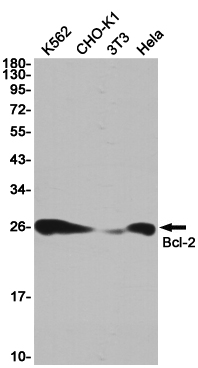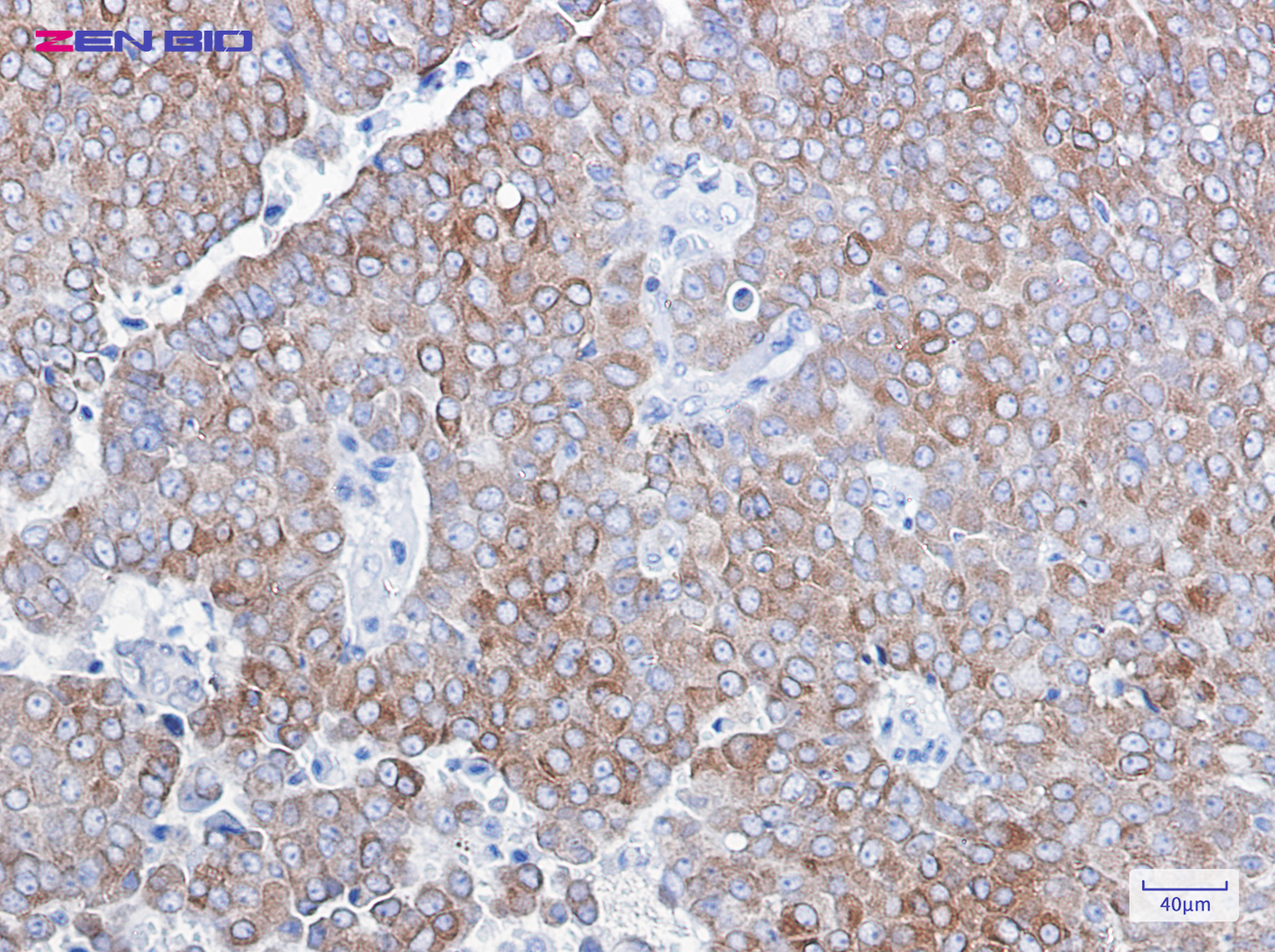-
Product Name
Anti-Bcl-2 Rabbit antibody
- Documents
-
Description
Bcl-2 Rabbit polyclonal antibody
-
Tested applications
WB, IHC-P, ICC/IF, FC
-
Species reactivity
Human, Mouse
-
Alternative names
Bcl-2; PPP1R50 antibody
-
Isotype
Rabbit IgG
-
Preparation
Antigen: Recombinant protein of human Bcl-2
-
Clonality
Polyclonal
-
Formulation
Supplied in 50nM Tris-Glycine(pH 7.4), 0.15M Nacl, 40%Glycerol, 0.01% sodium azide and 0.05% BSA.
-
Storage instructions
Store at -20°C. Stable for 12 months from date of receipt.
-
Applications
WB: 1/1000
IHC: 1/20-1/500
ICC/IF: 1/20
FC: 1/50
-
Validations

Western blot detection of Bcl-2 in MCF-7 cell lysates using Bcl-2 Rabbit pAb(1:1000 diluted).Predicted band size:26KDa.Observed band size:26KDa.

Western blot detection of Bcl-2 in K562,CHO-K1,3T3,Hela cell lysates using Bcl-2 Rabbit pAb(1:1000 diluted).Predicted band size:26KDa.Observed band size:26KDa.

Immunohistochemistry of Bcl-2 in paraffin-embedded Human breast cancer tissue using Bcl-2 Rabbit pAb at dilution 1/100
-
Background
Swiss-Prot Acc.P10415.Suppresses apoptosis in a variety of cell systems including factor-dependent lymphohematopoietic and neural cells. Regulates cell death by controlling the mitochondrial membrane permeability. Appears to function in a feedback loop system with caspases. Inhibits caspase activity either by preventing the release of cytochrome c from the mitochondria and/or by binding to the apoptosis-activating factor (APAF-1). May attenuate inflammation by impairing NLRP1-inflammasome activation, hence CASP1 activation and IL1B release (PubMed:17418785).
Related Products / Services
Please note: All products are "FOR RESEARCH USE ONLY AND ARE NOT INTENDED FOR DIAGNOSTIC OR THERAPEUTIC USE"
